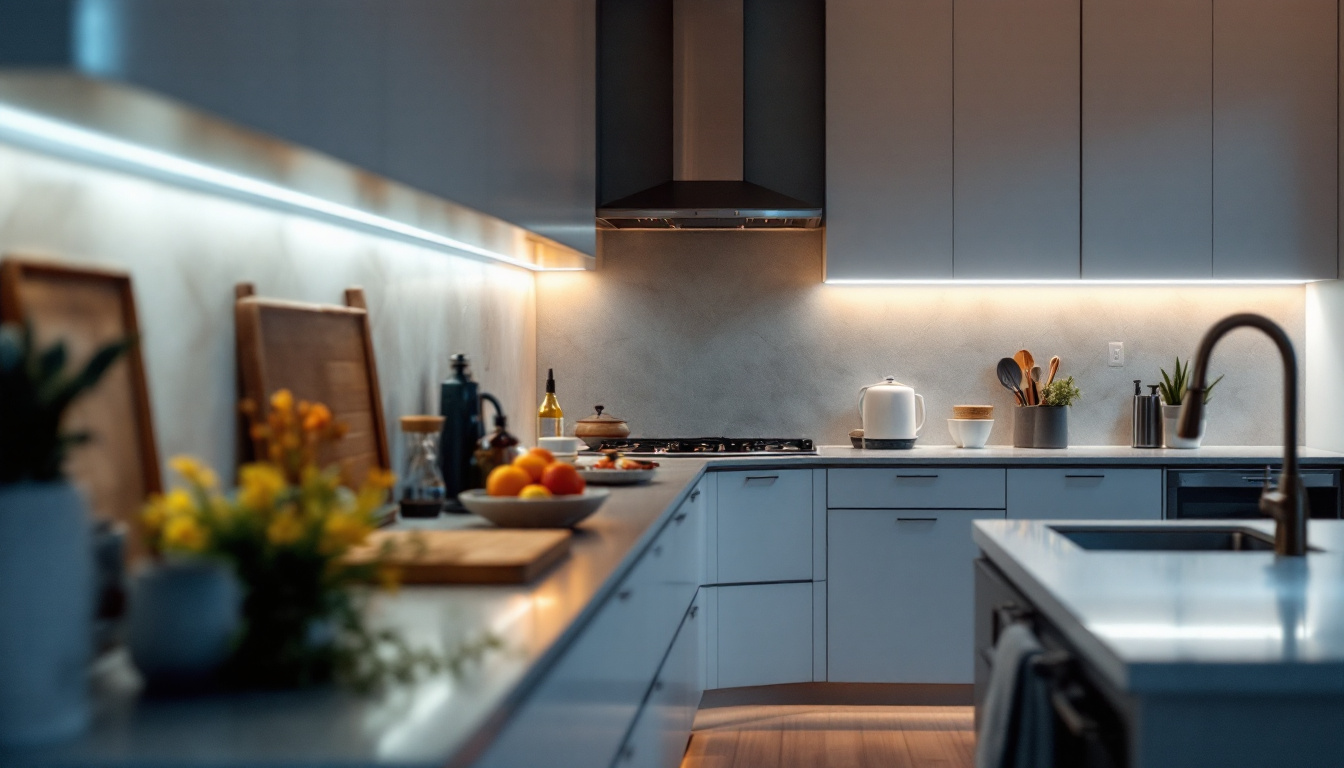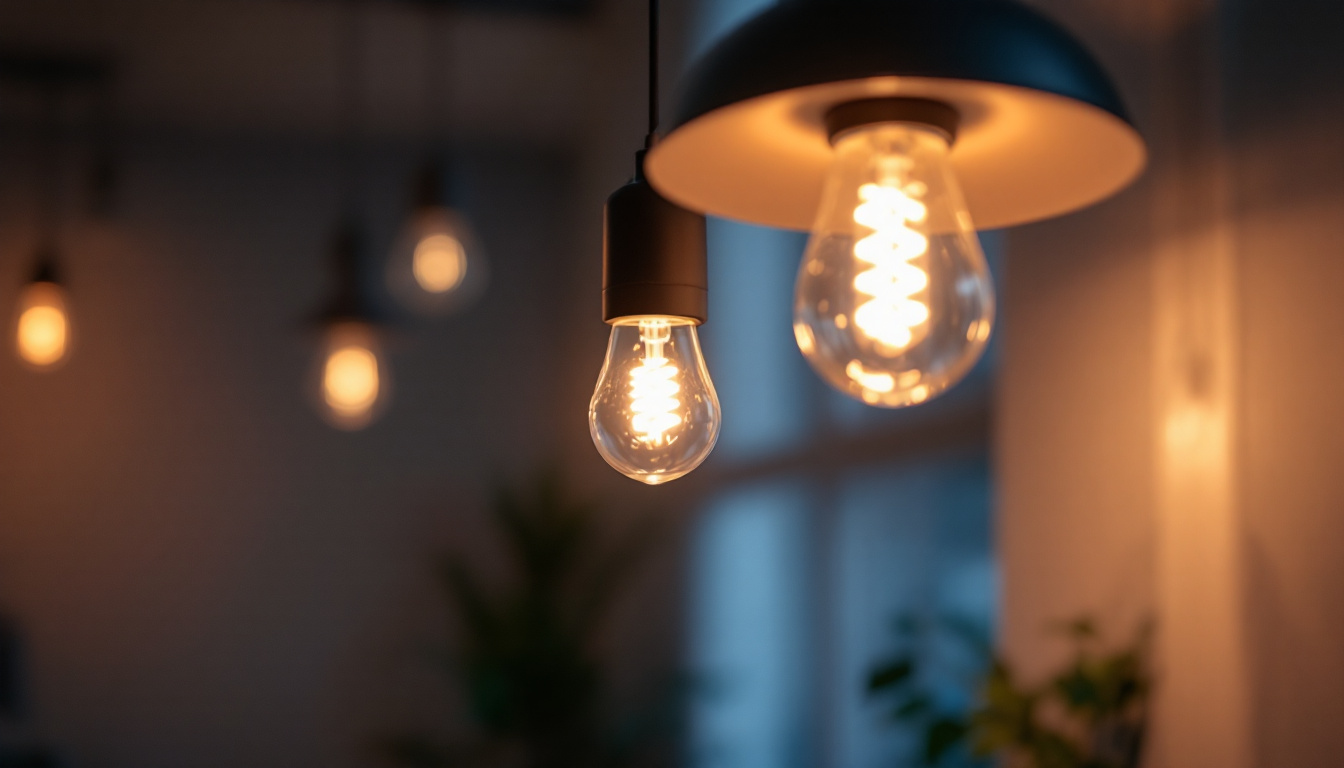
Track and rail lighting systems are essential components in both residential and commercial spaces, providing flexibility and functionality to illuminate various environments. For lighting professionals, understanding the intricacies of these systems is crucial for delivering effective and aesthetically pleasing results. This article serves as a comprehensive checklist, guiding lighting contractors through the essential considerations when working with track and rail lighting.
Track lighting consists of a series of lights mounted on a track that can be adjusted to focus on specific areas or objects. This type of lighting is highly versatile, making it suitable for a wide range of applications, from art galleries to retail spaces. Rail lighting, on the other hand, typically refers to a more decorative form of track lighting, often featuring a more stylized design. The aesthetic appeal of rail lighting can enhance the ambiance of a space, providing not just illumination but also a design statement that complements the overall decor.
Both systems allow for easy reconfiguration, enabling lighting professionals to adapt to changing needs without significant renovations. However, a thorough understanding of the components and installation processes is necessary to maximize their potential. For instance, the ability to reposition fixtures can be particularly beneficial in environments where displays frequently change, such as in museums or seasonal retail setups, allowing for dynamic lighting solutions that can be tailored to specific events or exhibitions.
When considering track and rail lighting, it is essential to familiarize oneself with the various components involved. These include the track itself, the fixtures, and the power supply. The track can be either a single circuit or a multi-circuit system, allowing for different configurations and control options. A multi-circuit system, for example, can enable different sections of the track to be controlled independently, providing greater versatility in lighting design and functionality.
Fixtures come in various styles, including spotlights, floodlights, and pendants, each serving different purposes. Spotlights are ideal for highlighting artwork or architectural features, while floodlights can provide broader illumination for larger areas. Additionally, the power supply must be compatible with the chosen track system, ensuring that the entire setup operates efficiently. Innovative technologies, such as LED fixtures, are increasingly popular due to their energy efficiency and long lifespan, making them a sustainable choice for modern lighting solutions.
There are primarily two types of track systems: line voltage and low voltage. Line voltage systems operate at 120V and are typically easier to install, as they do not require a transformer. However, they may limit the number of fixtures that can be used on a single track. This can be a crucial consideration in spaces where multiple light sources are needed to achieve the desired illumination and atmosphere.
Low voltage systems, usually operating at 12V or 24V, require a transformer but offer greater flexibility in terms of the number of fixtures and their arrangement. Understanding the differences between these systems is vital for lighting professionals to make informed decisions based on the specific needs of their projects. Moreover, low voltage systems often enable the use of more compact and lightweight fixtures, which can be advantageous in design scenarios where aesthetics and space-saving are priorities. The choice between line and low voltage systems ultimately hinges on the unique requirements of the environment and the intended use of the lighting, making it essential to evaluate each option carefully before installation.
Designing a track or rail lighting system involves more than just selecting fixtures and tracks. It requires a holistic approach that considers aesthetics, functionality, and the unique characteristics of the space being illuminated.
Before installation, a thorough assessment of the space is crucial. This includes evaluating the layout, existing architectural features, and the intended use of the area. For instance, in a retail environment, the lighting should highlight products effectively, while in a gallery, it should enhance the artwork without causing glare.
Additionally, consider the ceiling height and the overall design style of the space. High ceilings may benefit from adjustable fixtures that can direct light downward, while lower ceilings may require more compact designs to avoid overwhelming the space. It’s also important to take into account the color palette of the room; warm tones may require softer lighting to maintain a cozy atmosphere, while cooler tones might benefit from brighter, more focused light to create a vibrant feel.
Establishing clear lighting goals is essential for any project. Lighting professionals should consider the primary objectives of the lighting system, such as providing general illumination, accent lighting, or task lighting. Each of these objectives requires different strategies and fixture selections.
For example, accent lighting may involve the use of spotlights to draw attention to specific features, while task lighting may require fixtures that provide focused light for activities such as reading or cooking. Understanding these goals will guide the selection of fixtures and their placement within the track system. Moreover, integrating smart lighting technology can enhance these objectives by allowing for adjustable brightness and color temperature, enabling users to create the perfect ambiance for any occasion. This adaptability not only improves functionality but also enhances the overall user experience, making the space more versatile and inviting.
Proper installation is critical to the success of track and rail lighting systems. Adhering to best practices ensures safety, functionality, and longevity of the lighting setup.
Safety should always be the top priority when installing track and rail lighting. Lighting professionals must ensure that all electrical connections comply with local codes and regulations. This includes using appropriate wiring, circuit breakers, and ensuring that the power supply is correctly configured for the chosen track system.
Additionally, it is essential to consider the load capacity of the track. Overloading a circuit can lead to overheating and potential hazards. Carefully calculating the total wattage of all fixtures on the track will help avoid these issues.
Strategic placement of fixtures is vital for achieving the desired lighting effect. Lighting professionals should consider the angle and direction of the fixtures to minimize shadows and maximize coverage. Adjustable fixtures can be particularly useful in this regard, allowing for fine-tuning after installation.
Moreover, spacing between fixtures should be consistent to create a uniform look. A common guideline is to space fixtures approximately 4 to 6 feet apart, depending on the intensity of the light and the height of the ceiling.
Once the track and rail lighting system is installed, ongoing maintenance is essential to ensure optimal performance and longevity. Regular checks and cleaning can prevent issues that may arise over time.
Lighting professionals should recommend routine inspections to identify any potential issues early on. This includes checking for flickering lights, unusual noises, or any signs of wear and tear on the fixtures and track.
Additionally, inspecting the electrical connections and ensuring they are secure can prevent future problems. Addressing any issues promptly can save time and money in the long run.
Dust and debris can accumulate on fixtures and tracks, diminishing the quality of light produced. Regular cleaning is necessary to maintain the aesthetic appeal and functionality of the lighting system. Using a soft cloth and appropriate cleaning solutions can help keep fixtures looking their best without damaging them.
Furthermore, replacing bulbs as needed and ensuring that all components are functioning correctly will contribute to the overall efficiency of the lighting system. Keeping a record of maintenance activities can also help track any recurring issues and inform future decisions.
In today’s environmentally conscious market, energy efficiency and sustainability are paramount considerations for lighting professionals. Implementing energy-efficient solutions not only benefits the environment but can also lead to significant cost savings for clients.
When selecting bulbs for track and rail lighting systems, consider energy-efficient options such as LED bulbs. LED technology has advanced significantly, offering various color temperatures and brightness levels while consuming significantly less energy than traditional incandescent bulbs.
Additionally, LED bulbs have a longer lifespan, reducing the frequency of replacements and the associated waste. Educating clients on the benefits of energy-efficient lighting can enhance their satisfaction and contribute to a more sustainable future.
Integrating smart lighting solutions into track and rail systems can further enhance energy efficiency. Smart controls allow users to adjust brightness levels, set schedules, and even control lighting remotely through smartphone applications.
These systems can optimize energy usage by ensuring lights are only on when needed and can adapt to natural light levels throughout the day. Encouraging clients to consider smart lighting options can position lighting professionals as forward-thinking and environmentally responsible.
Track and rail lighting systems offer unparalleled flexibility and functionality, making them a popular choice for various applications. However, lighting professionals must navigate a range of considerations, from understanding the components and installation processes to ensuring ongoing maintenance and energy efficiency.
By following this essential checklist, lighting contractors can enhance their expertise and deliver exceptional results for their clients. Emphasizing the importance of design, installation best practices, and sustainability will not only improve the quality of lighting solutions but also contribute to a more responsible approach to lighting design.
Ultimately, staying informed about the latest trends and technologies in track and rail lighting will empower lighting professionals to create innovative and effective solutions that meet the diverse needs of their clients.
Ready to elevate your lighting game with the flexibility and functionality of track and rail systems? At LumenWholesale, we provide lighting professionals like you with the highest quality, spec-grade lighting products at prices that can’t be beaten. Say goodbye to inflated markups and hello to a vast selection of reliable, high-performance lighting that meets the most rigorous industry standards. With free shipping on bulk orders, you can stock up on premium lighting solutions without any hidden fees. Don’t compromise on quality or value—choose LumenWholesale for the best in wholesale lighting. Wholesale Lighting at the Best Value is just a click away.

Discover how lights for signs impact lighting contractors’ projects, boosting efficiency and visibility.

Explore the essential considerations for lighting contractors when installing under-cabinet lights.

Discover how MR16 LED bulbs can revolutionize your lighting projects by enhancing efficiency and reducing energy costs.

Discover the key elements that distinguish top lighting contractors in the realm of modern house outdoor lights.